Disruptive Elevated Train Maintenance Frustrates Bushwick Locals
A years-long project to remove lead paint and repair steel along elevated train lines is disrupting the area with noise, equipment, and fears of toxins.

The construction tarp protecting Til Death Café from construction along the M train line in Bushwick has led to a significant drop in foot traffic and revenue for the popular outdoor coffee shop. Photo by Regina Martinez
By Regina Martinez, Brooklyn Paper
On a triangular lot between Myrtle Avenue and Hart Street, under the M line, Emily Burns serves a latte at Til Death — a coffee shop with no walls and no roof.
Burns and her business partner, Megan Brosi, opened the outdoor café during the pandemic to give community members a space to socially distance. From the beginning, the shop leaned on its neighbors, raising funds for a food cart through weekend pop-ups that tapped into pandemic-era skills like smoking barbecue.
But now, business is slowing.
Since a large construction tarp went up on the elevated train tracks above Til Death in November 2024 — completely blocking the shop from view on Myrtle Avenue — Burns has seen a drop in foot traffic and revenue. After crunching the numbers, she found that from November to May, Til Death brought in about $1,800 less on average compared to the same period the year before.
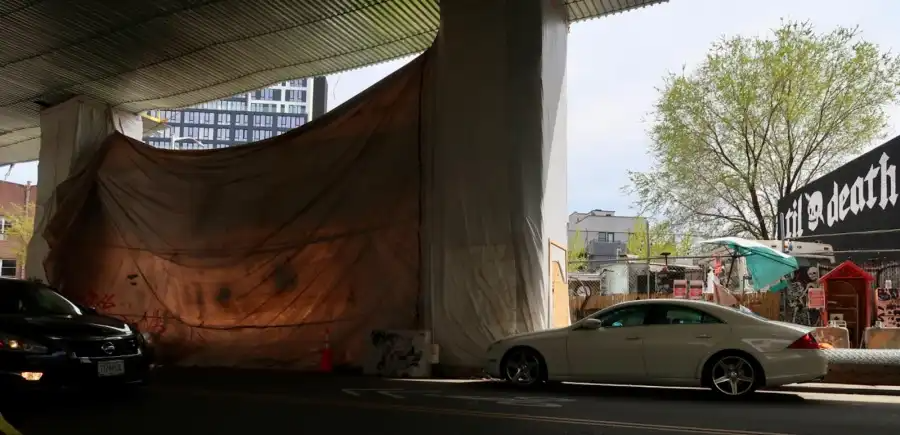
“I documented everything to present it to the MTA and say, ‘Do you guys have a program in place to help small businesses during construction?’” Burns said. “They offered to make us a sign saying that we’re open.”
According to Burns and other community members, the tarps have been in place since late 2024, though construction didn’t seem to begin until the end of February. The full timeline of the project remains unclear.
Burns learned about the work when a construction worker handed out flyers.
A Community Board 4 notice states that “M-line rehabilitation” began on February 17 and involves steel repairs and lead paint removal at six stations, from Myrtle Avenue to Fresh Pond Road. The process uses “abrasive blasting and painting” to address chipping lead that has fallen from Bushwick’s elevated tracks for years, with levels measured in 2020 at more than 12 times the federal hazard limit.
Though the notice stated that work between Hart Street and Central Avenue would last “approximately four weeks,” the tarps used to encase the toxic construction remain four months later.
The same noisy work to remediate lead and reinforce the steel structure has also been ongoing along Broadway where the elevated J train runs. The elevated railway was wrapped in protective covering at the Chauncey J train stop in 2024. After months of work, the coverings came down, revealing freshly painted steel, and the project moved further down the avenue in the direction of Myrtle-Broadway. This spring, the coverings returned and work resumed at the J Chauncey stop.
Brooklyn Paper reached out to the contact number listed on the project notice. When asked about discrepancies between posted construction updates and available communication channels, a project coordinator who declined to provide their name said the construction is expected to be completed “sometime during the summer of 2026.”
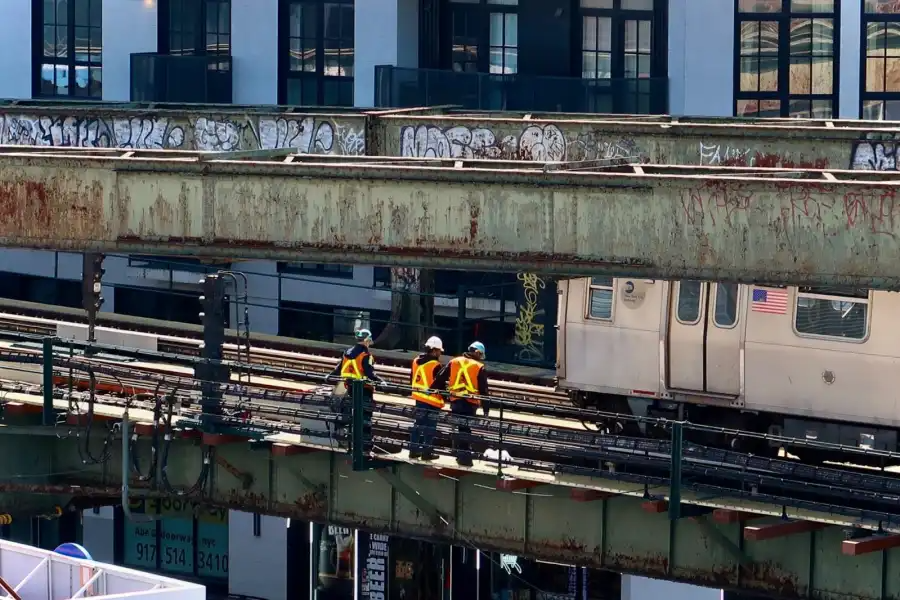
Many residents, including Jordan, who lives on Myrtle Avenue, and declined to share his last name, said they’ve received no clear updates. Though unaware of the exact work being done, he described moments when the blasting gets “jet engine loud” — so intense that his Apple Watch issues a noise warning.
“It’s never even done that at a club or a rave,” he said.
Burns shared similar concerns, noting that the construction has disrupted more than just revenue. Last week, she had to confront a worker after they hosed down the elevated walkway, sending water spraying into Til Death’s lot.
Community members under the M line are raising questions about the effectiveness of the tarps in containing lead particles, which can become airborne as dust when disturbed, increasing the risk of inhalation.
Tyler Cass, a server at Zatar Café & Bistro near the Central Avenue station, said he’s unsure how much business has been impacted — some construction workers stop in for coffee and pastries — but his bigger concern is containment, as Zatar has an outdoor dining space.
Chipped paint containing dangerously high levels of lead has been falling from the elevated subway tracks in Bushwick for years, raising health concerns among residents, elected officials, and union painters.
In 2020, lab tests of paint chips collected from several stations revealed lead concentrations of about 63,000 parts per million — more than 12 times the federal hazard threshold. Once disturbed, lead particles can become airborne as dust, especially when crushed underfoot or by passing cars and trains, increasing the risk of inhalation.
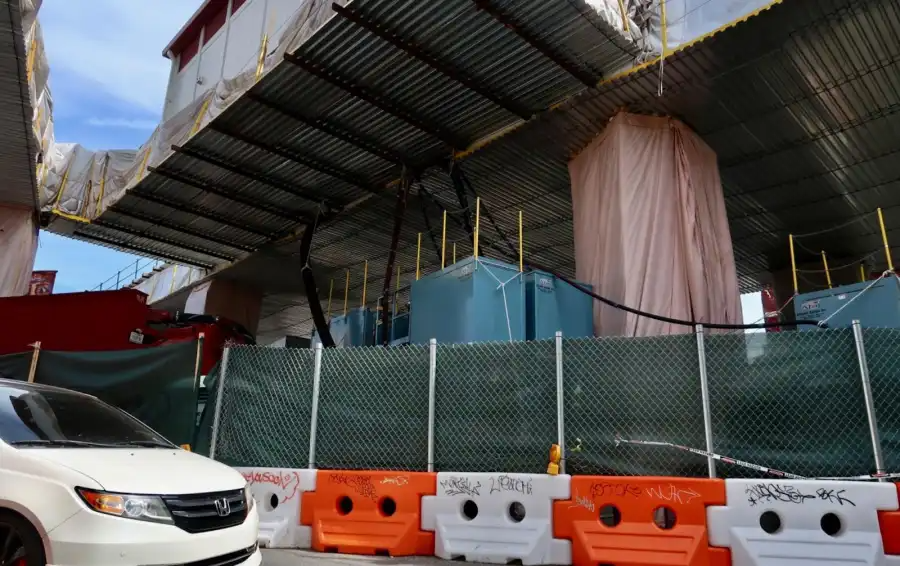
“Realistically, what is the tarping doing?” he asked. “I know I can smell it outside.”
Burns mentioned a generator and HVAC system outside Til Death used for sandblasting the lead paint while simultaneously vacuuming it up. However, she also questions the effectiveness of the tarping, especially since it appears sporadic.
“Honestly, it looks like a three-year-old took a bunch of shower curtains and made a fort,” she said.
The MTA did not respond to multiple requests for comment on how lead blasting is being contained during the rehabilitation process.
Still, Burns is quick to say she doesn’t blame the workers.
“They’re just doing their jobs,” she said, “the same way I’m trying to do mine.” Over time, the two sides have learned to coexist, even poking fun at their unusual working relationship.
She said she’s been in touch with the project manager, Phill, who often walks over to share updates. Two weeks ago, he told her the tarps would be “coming down soon,” noting he had verbal approval. As of this week, he told her written approval had been secured.
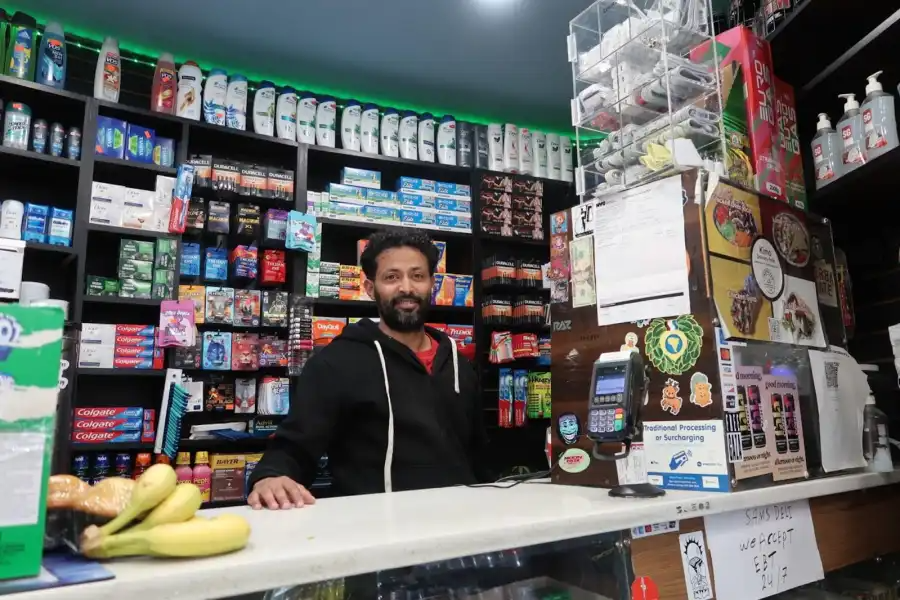
“I know you’re not gonna pinky swear me, but what’s the actual possibility?” Burns joked.
In a gesture of good faith — and perhaps sympathy — she said the construction crew once dropped off a large box of earplugs for the shop.
“We gave them out to customers,” Burns laughed. “We had our sugar, our Splenda, and our earbuds.”
Other businesses have also raised concerns about the construction’s impact. Mike Kassin, a cashier at Sam’s Deli, pointed to a truck parked directly in front of the storefront as a major issue.
“They kill my business,” Kassin said. “All the noise, the smell — it’s too much. People just don’t come inside.”
The community engagement coordinator confirmed that blasting and painting work between Stanhope Street and Knickerbocker Avenue began on April 21, with businesses notified through fliers. However, many details about the project’s full scope and its potential impact on the area remain unclear.
— Additional reporting by Cate Corcoran
Editor’s note: A version of this story originally ran in Brooklyn Paper. Click here to see the original story.
Related Stories
- Review Finds Woefully Slow Buses and Too Few Dedicated Lanes
- MTA Looks for Answers After Subway Power Failure Strands Riders for Hours
- Interborough Light Rail Project May Include a Tunnel Under Queens Cemetery
Email tips@brownstoner.com with further comments, questions or tips. Follow Brownstoner on X and Instagram, and like us on Facebook.



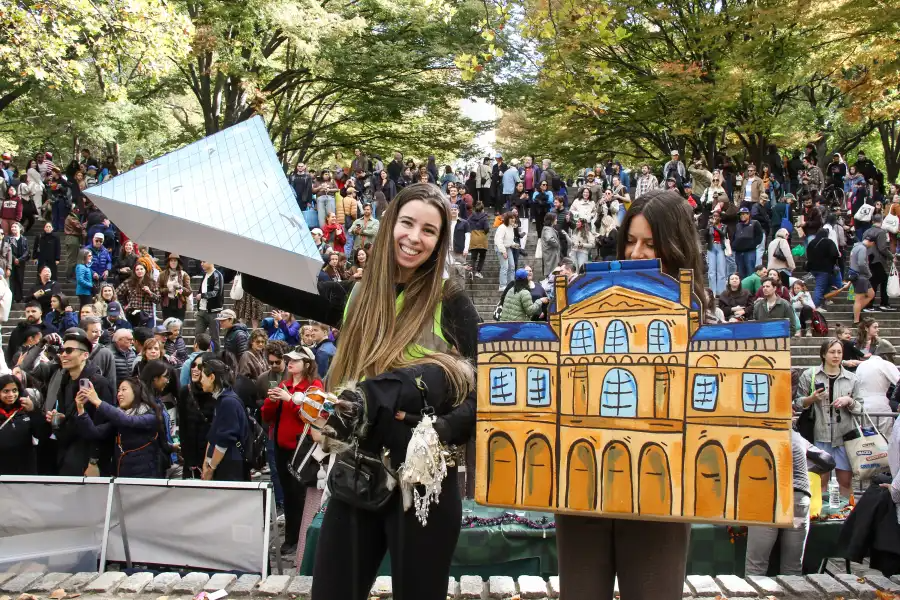

What's Your Take? Leave a Comment